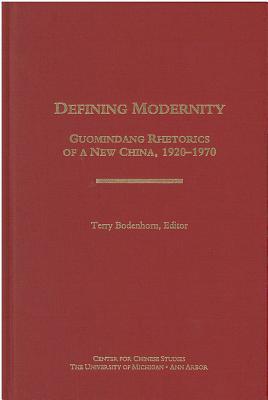

 |

|

Sold Out
Book Categories |
Over the course of the twentieth century, the Guomindang (the KMT or Nationalists) articulated and marketed symbols, traits, and institutions crucial to a modernizing China. Understood as constituents of modernity, tangible elements (paper money, flags, national anthems), specific institutions (educational, governmental, and scientific facilities), and intangible qualities (nationalism, social trust, social discipline) all drew the attention and advocacy of Party members.
This volume offers a reappraisal of Guomindang history based on a close analysis of cultural, ideational, and symbolic practices rather than the more common social, political, and economic frames. Chapters on education policies and practices, Party relations with Chinese Christian and missionary communities, the use of paper currency, political propaganda, and the construction of scientific institutions all provide fresh points of comparison with Chinese Communist ideas, practices, and dilemmas. The essays here highlight the complexities and range of creative possibilities confronting a nation-state bent upon the "modernizing" mission.
Terry Bodenhorn is Assistant Professor of History, University of Illinois, Springfield.
Login|Complaints|Blog|Games|Digital Media|Souls|Obituary|Contact Us|FAQ
CAN'T FIND WHAT YOU'RE LOOKING FOR? CLICK HERE!!! X
 You must be logged in to add to WishlistX
 This item is in your Wish ListX
 This item is in your CollectionDefining Modernity: Guomindang Rhetorics of a New China, 1920-1970
X
 This Item is in Your InventoryDefining Modernity: Guomindang Rhetorics of a New China, 1920-1970
X
 You must be logged in to review the productsX
 X
 X

Add Defining Modernity: Guomindang Rhetorics of a New China, 1920-1970, Over the course of the twentieth century, the Guomindang (the KMT or Nationalists) articulated and marketed symbols, traits, and institutions crucial to a modernizing China. Understood as constituents of modernity, tangible elements (paper money, flags, n, Defining Modernity: Guomindang Rhetorics of a New China, 1920-1970 to the inventory that you are selling on WonderClubX
 X

Add Defining Modernity: Guomindang Rhetorics of a New China, 1920-1970, Over the course of the twentieth century, the Guomindang (the KMT or Nationalists) articulated and marketed symbols, traits, and institutions crucial to a modernizing China. Understood as constituents of modernity, tangible elements (paper money, flags, n, Defining Modernity: Guomindang Rhetorics of a New China, 1920-1970 to your collection on WonderClub |